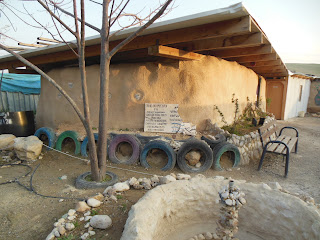 |
| Sunset on the beach in Tel Aviv |
When I first learned that I’d be spending three months in Tulkarm,
I did what every self-respecting researcher would do – I “Goggled” it! Among other things, I learned Tulkarm was a
medium sized city (60,000 people) in the northwest of the West Bank, had a
“subtropical” climate, and was located just 14 kilometers (about 10 miles) from
the Mediterranean.
I also learned that, thanks to checkpoints that started
during the first Intifada, followed by the construction of the Wall in 2002, the
sea is inaccessible to the residents of Tulkarm. “The last time I saw the sea was in 1983,”
one of our local contacts, a man who works with the Jewish peace organization
B’tselm, told us.
“My children have never seen the ocean,” added Muawya, taxi
driver and translator for our EAPPI team.
He told us that, once, one of his sons came across the term “wave” in a
book – and, without a visual point of reference, it was a difficult concept to
explain.
Muawya also told us that once he tried to take his wife (who
has also never seen the sea) and four sons to the Dead Sea – “Not the same as
the ocean, but it is water for them to play in,” he said. After a drive of several hours, the family was
turned back by Israeli soldiers with no reason given. The Dead Sea, by the way,
is in the Jericho Valley, also in the West Bank, but, as is often the case
here, road blocks, checkpoints and the Wall make travel from one place to
another difficult, if not impossible.
 |
Recently, I spent a couple of days off in Tel Aviv. The coastal city is about 25 miles from
Tulkarm, as the crow flies, but even for me, a Westerner with a passport that
would let me cross the checkpoints easily, what was once a 45 minute journey
exceeded two hours. I was first driven
to a checkpoint by a Palestinian driver, then, after a lengthy inspection of my
passport by a bored, young soldier, transferred to a taxi with Israeli plates
for the remainder of the two-hour journey.
In Tel Aviv, the unfairness of the situation struck me
afresh! Here I was, lying on this
beautiful beach, watching children playing in the waves and building sand
castles. And only a short distance away,
a whole generation of children was growing up without ever being able to enjoy
the simple pleasure of a day at the beach.
 |
| A gift from the sea |
.I gathered shells and brought them back to Tulkarm for Muawya
to add to his collection of “beach memorabilia” from other EAs. Hopefully, some day he and his family will be
able to return these gifts to the sea in person!










